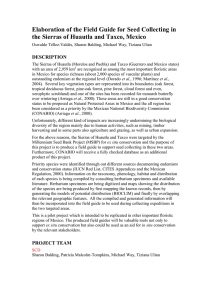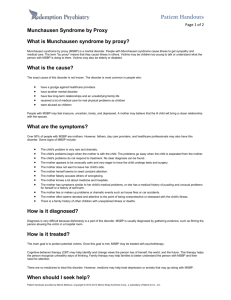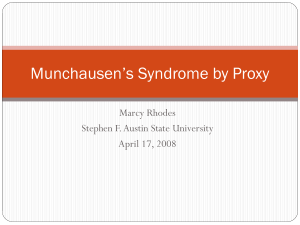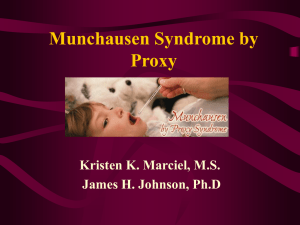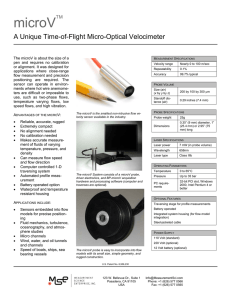CHRAT Vacation Studentship - Summer 2013
advertisement
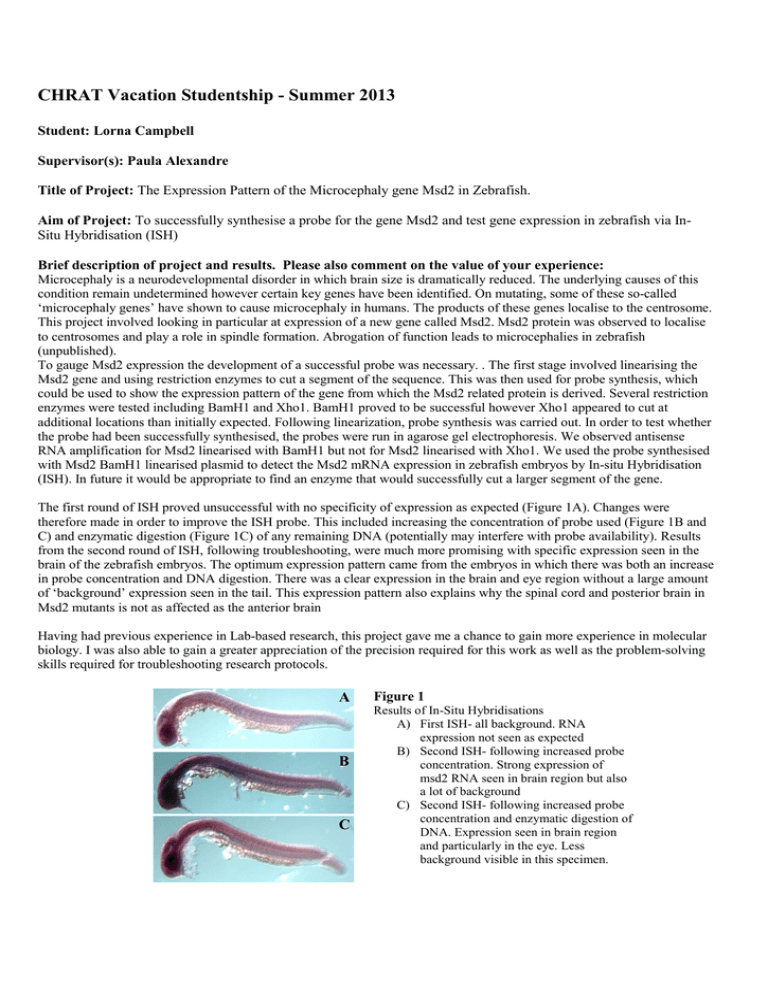
CHRAT Vacation Studentship - Summer 2013 Student: Lorna Campbell Supervisor(s): Paula Alexandre Title of Project: The Expression Pattern of the Microcephaly gene Msd2 in Zebrafish. Aim of Project: To successfully synthesise a probe for the gene Msd2 and test gene expression in zebrafish via InSitu Hybridisation (ISH) Brief description of project and results. Please also comment on the value of your experience: Microcephaly is a neurodevelopmental disorder in which brain size is dramatically reduced. The underlying causes of this condition remain undetermined however certain key genes have been identified. On mutating, some of these so-called ‘microcephaly genes’ have shown to cause microcephaly in humans. The products of these genes localise to the centrosome. This project involved looking in particular at expression of a new gene called Msd2. Msd2 protein was observed to localise to centrosomes and play a role in spindle formation. Abrogation of function leads to microcephalies in zebrafish (unpublished). To gauge Msd2 expression the development of a successful probe was necessary. . The first stage involved linearising the Msd2 gene and using restriction enzymes to cut a segment of the sequence. This was then used for probe synthesis, which could be used to show the expression pattern of the gene from which the Msd2 related protein is derived. Several restriction enzymes were tested including BamH1 and Xho1. BamH1 proved to be successful however Xho1 appeared to cut at additional locations than initially expected. Following linearization, probe synthesis was carried out. In order to test whether the probe had been successfully synthesised, the probes were run in agarose gel electrophoresis. We observed antisense RNA amplification for Msd2 linearised with BamH1 but not for Msd2 linearised with Xho1. We used the probe synthesised with Msd2 BamH1 linearised plasmid to detect the Msd2 mRNA expression in zebrafish embryos by In-situ Hybridisation (ISH). In future it would be appropriate to find an enzyme that would successfully cut a larger segment of the gene. The first round of ISH proved unsuccessful with no specificity of expression as expected (Figure 1A). Changes were therefore made in order to improve the ISH probe. This included increasing the concentration of probe used (Figure 1B and C) and enzymatic digestion (Figure 1C) of any remaining DNA (potentially may interfere with probe availability). Results from the second round of ISH, following troubleshooting, were much more promising with specific expression seen in the brain of the zebrafish embryos. The optimum expression pattern came from the embryos in which there was both an increase in probe concentration and DNA digestion. There was a clear expression in the brain and eye region without a large amount of ‘background’ expression seen in the tail. This expression pattern also explains why the spinal cord and posterior brain in Msd2 mutants is not as affected as the anterior brain Having had previous experience in Lab-based research, this project gave me a chance to gain more experience in molecular biology. I was also able to gain a greater appreciation of the precision required for this work as well as the problem-solving skills required for troubleshooting research protocols. A B C Figure 1 Results of In-Situ Hybridisations A) First ISH- all background. RNA expression not seen as expected B) Second ISH- following increased probe concentration. Strong expression of msd2 RNA seen in brain region but also a lot of background C) Second ISH- following increased probe concentration and enzymatic digestion of DNA. Expression seen in brain region and particularly in the eye. Less background visible in this specimen.
